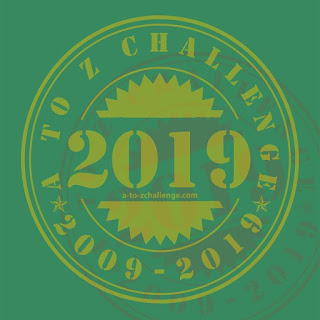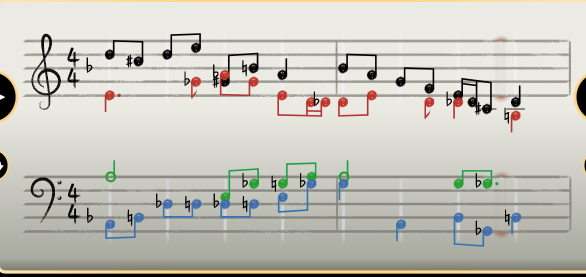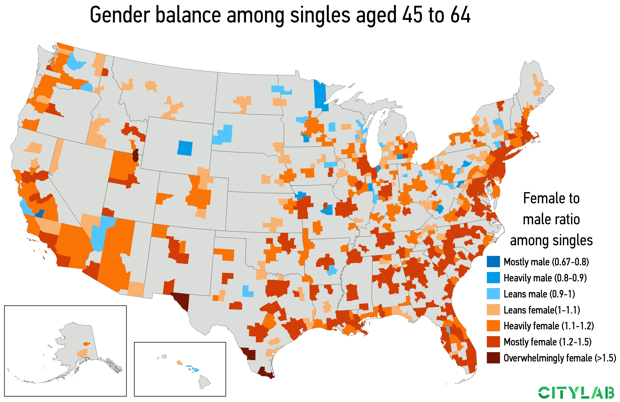I'm traveling this weekend, starting with a night about a block from my office. Tonight is WhiskyFest Chicago, starting in about 90 minutes (though they let us start gorging on cheese and crackers at 5pm). For easily-understood reasons, I'm staying at the same hotel tonight, then heading to my college radio station's 60th anniversary party tomorrow morning. Not my first choice of timing, but I had no control over either event.
Sunday I head into Manhattan, and coincidentally the Yankees are in town...
The view from my room today fails to suck:

 Once again, the Daily Parker will participate in the Blogging A-to-Z challenge, this year on the theme: "Basic Music Theory."
Once again, the Daily Parker will participate in the Blogging A-to-Z challenge, this year on the theme: "Basic Music Theory."
For the A-to-Z challenge, I'll post 26 entries on this topic, usually by 7am Chicago time (noon UTC) on every day except Sunday. I'll also continue my normal posting routine, though given the time and effort required to write A-to-Z posts, I many not write as much about other things.
This should be fun for you and for me. Music theory explains how and why music works. Knowing about it can help you listen to music better. And, of course, it'll help you write music better.
The first post will be on April 1st.
(You can see a list of last year's posts here.)
Today is Johann Sebastian Bach's 334th birthday, and to celebrate, Google has created a Doodle that uses artificial intelligence to harmonize a melody that you can supply:
Google says the Doodle uses machine learning to "harmonize the custom melody into Bach's signature music style." Bach's chorales were known for having four voices carrying their own melodic line.
To develop the AI Doodle, Google teams created a machine-learning model that was trained on 306 of Bach's chorale harmonizations. Another team worked to allow machine learning to occur within the web browser instead of on its servers.
The results are...interesting. (I'm about to get my music theory nerd on, so if that's not your bag you can wait until I post something political this afternoon.)
Here's a little d-minor melody I whipped up:

The basic harmonic structure of this melody is i-V7/V-V-vi-V-i. Even though I haven't taken a music theory course in [redacted] years, I can probably harmonize this melody ten times without breaking a sweat. Basically, on the beats, you've got d minor, a minor on &2, E major, A major; then in the second bar, Bb major, g minor, E major, A major, d minor. (Note that some of those are passing harmonies that expand other harmonies.)
Google's AI did not do that. It actually got a little flummoxed. Here's one example:

Oh, dearie dearie me. I think one of the problems is that it thought I had done something really weird in F-major instead of something prosaic in d-minor. And it doesn't provide any way of tweaking the harmonization.
So, really very cool AI going on there, but not yet ready for prime time. Still worth playing around with. If I had more time I'd try some simpler melodies to see if it helps.
(If you liked this post, by the way, you will love what I do in April.)
Yet another Chicago-based medical marijuana company has merged with an out-of-state company ahead of an expected legalization of recreational pot this summer:
Chicago’s Cresco Labs on Monday unveiled a $120 million merger that allows it to expand into Florida, where analysts predict demand for medical marijuana will significantly grow in the coming years. By 2022, the market for medical pot could reach a whopping $1.7 billion, according to analysts’ projections.
Under the agreement, Cresco will acquire Florida marijuana grower and retailer VidaCann, a move that will allow Cresco to operate 30 medical dispensaries in the nation’s third most populous state. The company aims to significantly expand its operations by the end of the year, in part by doubling the size of its medical marijuana cultivation center. It also plans to have 20 dispensaries open by year’s end.
Last week, a Phoenix company announced one of the largest pot deals in U.S. corporate history by taking over Chicago-based Verano Holdings for $850 million.
If Cresco’s ownership of VidaCann is approved, Cresco could surpass another major marijuana player based in Chicago — Green Thumb Industries, which currently has 11 cultivation centers.
A vote on legalizing recreational cannabis could come as early as July, and is expected to pass.
I live only a short walk from the space formerly occupied by 42 Grams, one of the best restaurants I've ever experienced. The food at 42 Grams was so good that they earned two Michelin stars just a few months after opening. But when the owners' marriage fell apart, so did the restaurant, closing suddenly one weekend in May 2017.
A new restaurant opened in the space at the end of September, and...well, it might be worth trying, but maybe not yet.
Brass Heart opened last summer. Chicago Eater was optimistic:
Last year, there was worry about a lack of fine dining options in Chicago after a rash of closings including Tru and 42 Grams. Brass Heart swings the pendulum the other way.
The Robb Report interviewed chef Matt Kerney on his ambitions for the space:
“It’s a chef’s dream to have a little tasting menu-only restaurant, and when given the opportunity, I wanted to do my high-end, hyper-refined restaurant,” he says.
“Everything that we cook I want to taste like the purest form of itself. I want the lobster to be the most lobster-y lobster you’ve had and the tomato to be the most tomato-y,” he says. “For our tomato dish we make a tomato oil, and then a tomato vinegar on top of that. Everything is about amplifying exact flavors.” And where at Longman he worked magic with a lot of off cuts, he gets the luxury of creating with high-end ingredients at Brass Heart, using A5 wagyu and lobster in his menu.
But the post-open reviews do not encourage. Chicago magazine gave it 1½ out of 4 stars:
Alas, the procession of zillion-megawatt meteorites is interspersed with miscalculations and filler. The course before that magical halibut involved cappelletti chewier than bubblegum, stuffed with oversalty pheasant, and served in a broth so aggressively earthy it almost tasted like dirt. After the halibut came a shockingly bland seared lamb loin sitting atop ground hazelnuts and surrounded by beets and 25 dots of flavorless persimmon purée. Next came the Kobe beef masterpiece and, with it, hope. But the following course? A nutty Grayson cheese that had been transformed into a slice of cheesecake and paired, for some nefarious reason, with Dijon mustard foam: a marriage that makes no sense. The 15 courses began to feel like a Ping-Pong game between James Beard and an art school freshman. The three-and-a-half-hour meal’s rhythm, which was relaxed bordering on somnolent, only accentuated the problem.
It does have 4½ stars on Yelp, but so do Wildberry Pancakes and Dog Haus Biergarten.
So I may not plunk down the $125 for the entry-level omnivore menu just yet. We'll see what the Michelin folks say.
Chicago produces a...technically non-toxic liquid called Jeppson's Malört. If you don't know what this is, The Ringer explains:
The first thing you should know about Malört is that, well, it’s bad. A Google search for it will direct you to the term “Malört face,” a query that will lead to a close-up montage of poor souls reacting to their first taste of the amber liquor: eyes closed, noses scrunched, jaws clenched, veins swelling out of foreheads, perhaps a tear trickling down a cheek in horror or disgust. This is pretty much the point.
For 85 years, Jeppson’s Malört has been a Chicago institution, one that has remained basically unchanged since Prohibition. It’s compared to absinthe, which shares its wormwood core, and to aquavit, which shares its Scandinavian lineage, but Malört isn’t like anything. Describing its flavor profile is a favorite parlor game among those who’ve sampled it. It tastes like earwax or a hornet’s nest or paint thinner or anger; in the words of the back label on the bottle, it is “bitter,” “unusual,” “full-bodied,” and “savored by two-fisted drinkers.” Its following in Chicago has all a cult’s hallmarks: an initiation ritual (see: the Malört face, frequently snarled by visitors who’ve trusted a Chicagoan to order for them), a secret handshake (the so-called Chicago handshake: a shot of Malört and an Old Style), and more than a few tattoos inked across diehards’ flesh. Malört is many things: a Midwestern tradition, a temperance loophole, and a passion project that became a life’s work that could become, maybe, a national phenomenon.
Malört came to the company by way of a Swedish immigrant named Carl Jeppson, who’d arrived in Chicago in the late 1800s from Ystad, a city in the country’s south. He’d fashioned Malört after the bitter spirits of Sweden and started selling the stuff as something of a cure-all—the word “malört” is Swedish for wormwood, sometimes used in digestifs out of a belief that the herb settles the stomach. This may have helped Jeppson skirt Prohibition: Legend holds that he was fond of offering suspicious, bootlegger-hunting Feds a taste of his wares, after which they could only conclude that no one would dare drink it recreationally. The exact details are murky, but sometime in the mid-1930s, shortly after Prohibition ended, Jeppson sold the recipe to Bielzoff, which carried on making it.
As a native Chicagoan, I have, of course, had some. And I can't recommend trying some too much.
Today actually had a lot of news, not all of which I've read yet:
And now, good night to February.
I've had a lot going on this week, including seeing an excellent production of Elektra at Lyric Opera of Chicago last night, so I haven't had time to read all of these articles:
And I shall begin reading these...soon. Maybe tomorrow. Sigh.
Chicagoan Bob Lempa had a simple question for Peggy Baker on Tuesday:

WGN-TV reporter Shannon Halligan tracked down the story:
The man behind the message is Bob Lempa, who made big Valentine's Day plans this year. He wanted to write a proposal message so big his girlfriend Peggy Baker could see it from her 37th floor window in the Blue Cross Blue Shield building. The couple have been together for nine years since they met at a party for a mutual friend, and he was ready to pop the question.
"I had been by Maggie Daley Park a number of times just getting the feel of where I could do it, how big it would have to be, because Peggy’s on the 37th floor so I knew it had to be big to be seen," Lempa said.
But when the big day rolled around, there was one problem: no snow. So he decided to wait until Tuesday, when there was finally enough on the ground for him to clear away and write his message. It wasn’t an easy surprise to pull off. The letters were 45 feet tall and 31 feet wide, and took a little over six hours to make.
Halligan reports Baker said yes. Gawd, I hope so.
Here's the message in a larger view from my office yesterday:

Nicely done, Bob. And good luck to you both!
Demographers Richard Florida and Karen King crunched some numbers to determine which metro areas had more single men or single women. Some findings:
In absolute numbers, heterosexual men have a considerable dating advantage in metros across the East Coast and South. New York City has more than 200,000 more single women than men; Atlanta 95,000 more; Washington, D.C. 63,000 more; Philadelphia nearly 60,000 more. The pattern continues for Baltimore and Miami. Meanwhile, the opposite is true out West, where the absolute numbers favor heterosexual single women. San Diego has more than 50,000 more single men than women; Seattle has 46,000 more; San Jose has 37,000 more; Phoenix 32,000 more. The pattern is similar for Denver and San Francisco.
Overall, more than 60 percent of metros (234 metros) lean male, and about a third (136) lean female. There are a dozen metros where the odds are more or less even.
Among large metros (with more than one million people), tech-driven San Jose has the smallest ratio of single women to men (868 per 1,000). But across all metros, the geography is more varied. Jacksonville, North Carolina; Hanford-Corcoran, California; The Villages, Florida (a retirement community); and the Watertown-Fort Drum, New York all have ratios of 500-600 single women to 1,000 single men.
The map for singles aged 45 to 64 shows the odds shifting sharply, simply because women tend to outlive men. The map is almost entirely orange: By this age, single men have the advantage in most metros across the country.

Of course, this analysis does not account for factors that often influence our mating life. We don’t know the sexual orientation of these singles—a huge factor—nor does our analysis account for education, race, or ethnicity; or those people who are in relationships but not yet married.
Now put your hands up!